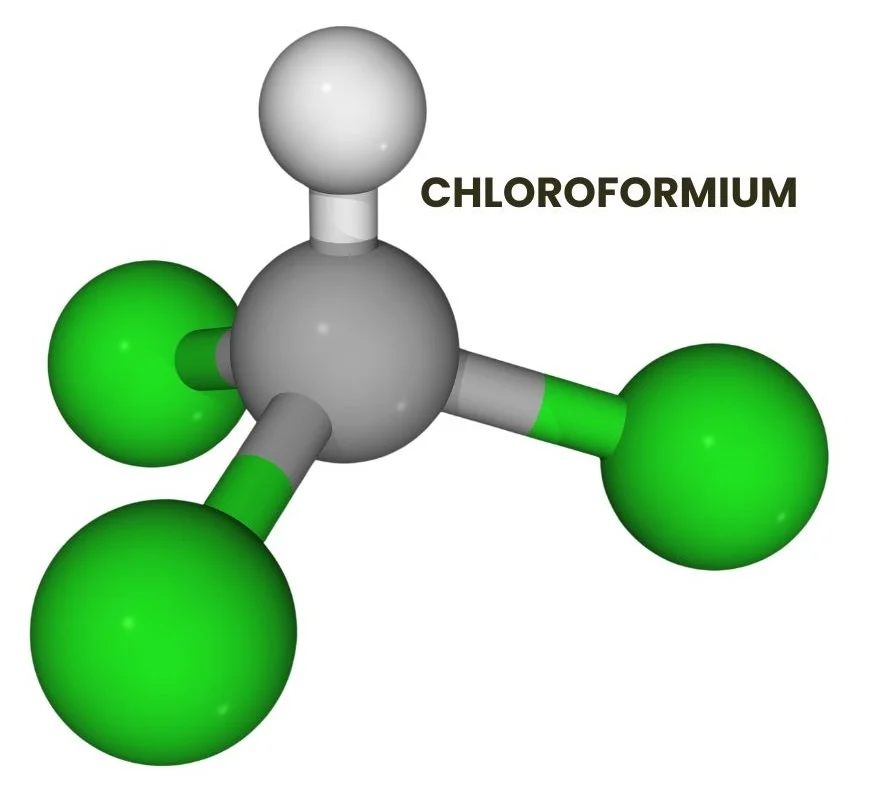Chloroformium, commonly known as Chloroform, is a well-known chemical compound that has been widely used as a general anaesthetic and antispasmodic agent in both medical and surgical practices.
Despite its historical significance, its use has diminished in modern medicine due to safety concerns.
This homoeopathic remedy is recognized for its potential therapeutic effects, particularly in cases of spasmodic and painful conditions.

Table of Contents
ToggleSOURCE INFORMATION
Scientific Classification
- IUPAC Name: Trichloromethane
- Chemical Formula: CHCl₃
- CAS Number: 67-66-3
- Molecular Weight: 119.38 g/mol
Origin
- Chloroform was first discovered in 1831 by the French chemist Joseph Louis Gay-Lussac.
- It was initially used in laboratories for its solvent properties and as a reagent in chemical synthesis.
- Its anesthetic properties were noted shortly after its discovery, leading to its application in surgery.
Historical Facts
- Chloroform was first used as an anesthetic during childbirth in the mid-19th century.
- Notably, Queen Victoria used chloroform during the birth of her eighth child in 1853, which popularized its use in obstetrics.
- Its use declined in the 20th century due to safety concerns regarding potential toxicity, including its carcinogenic properties and the risk of inducing arrhythmias.
DRUG PATHOGENESIS
Chloroformium acts as a powerful anesthetic, leading to complete muscular relaxation.
It affects the central nervous system by depressing the respiratory and cardiovascular functions. Symptoms may include:
- Weak and quick pulse
- Shallow or irregular breathing
- Convulsions, especially during biliary or nephritic colic
- Gastric distress and pain
The therapeutic effects observed with Chloroformium in homoeopathic practice include alleviating symptoms associated with pain, spasms, and delirium.
DIATHESIS
- Suitable for individuals who exhibit a tendency toward spasms, weakness, and nervous conditions.
TEMPERAMENTS
- Particularly helpful for sensitive individuals with a predisposition to convulsive disorders or those who react strongly to physical and emotional stress.
KEY CHARACTERISTICS
- Anaesthetic: Induces muscular relaxation and reduces pain perception.
- Antispasmodic: Effective in alleviating spasmodic pains, such as colic and gastralgia.
- Nervous System Effects: Can induce symptoms of delirium and excitement.
DETAILED ORGAN SYMPTOMS
HEAD
- Delirium: Marked excitement and violence; the patient may appear confused or agitated.
- Physical Symptoms: Head drawn down upon shoulders, rapid opening and closing of eyes, and constricted pupils.
CARDIOVASCULAR
- Pulse: Weak and rapid; may indicate cardiovascular distress.
- Breathing: Shallow or stertorous breathing; can lead to respiratory failure in high doses.
GASTROINTESTINAL
- Stomach Pain: Patients often report a sore and bruised feeling in the stomach, with symptoms resembling gastritis.
- Flatulence: Significant gas buildup and regurgitation of food.
RESPIRATORY
- Cough: Dry tickling cough, particularly at night, may exacerbate discomfort.
- Shortness of Breath: Difficulty breathing upon exertion, indicative of respiratory compromise.
MUSCULOSKELETAL
- Weakness: Notable weakness in limbs, particularly from the knees down; may lead to fatigue and tiredness.
MODALITIES
- Worse: Symptoms tend to worsen with movement and exertion.
- Better: Improvement noted in calm, quiet settings or with rest.
RELATIONSHIP WITH OTHER DRUGS
ETHER
- Ether is another volatile anesthetic that has been historically used in surgery.
- Relationship: Both ether and chloroform act as general anesthetics, providing muscle relaxation and pain relief.
- Ether may be utilized post-operatively to manage complications such as bronchitis or respiratory distress that can arise after surgery.
- Clinical Use: Ether can be indicated for patients recovering from surgical procedures where chloroform was initially administered, helping to alleviate residual symptoms.
SPIRITUS AETHERIS COMPOSITUS (Hoffman’s Anodyne)
- A combination of ether and other agents, known for its analgesic and antispasmodic properties.
- Relationship: This remedy is beneficial for conditions such as flatulence and angina pectoris.
- It may be used in conjunction with chloroform for patients experiencing excessive gas or chest pain.
- Dosage: The typical dose ranges from 5 minims (m) to 1 dram in water, which is administered as needed based on the severity of symptoms.
Comparisons with Other Remedies
- Arsenicum Album: Often compared with chloroform for conditions involving anxiety, restlessness, and exhaustion.
- Belladonna: Useful in cases of acute conditions where excitability and inflammation are present.
- It may also be indicated in situations where chloroform-induced symptoms exacerbate.
- Nux Vomica: Particularly useful for digestive disturbances, where chloroform may not fully relieve symptoms related to gastrointestinal spasms.
DOSE
- Commonly Used Potencies: Higher attenuations or the sixth potency are typically utilized in homoeopathic practice.
- Dosage Forms: Administered as a diluted solution; usage depends on the severity and type of symptoms.
Frequently Asked Questions (FAQs)
Is chloroform safe for all patients?
- Chloroform can be unsafe for individuals with certain health conditions, including heart disease or respiratory issues.
- It should only be used under professional guidance.
How is C chloroformium prepared in homeopathy?
- In homeopathy, chloroform is prepared by serial dilution and succussion (vigorous shaking), which enhances its therapeutic properties while minimizing toxicity.
Can chloroform be used in modern medicine?
- Chloroform’s use as a general anesthetic has largely been discontinued due to safety concerns. It is primarily used in laboratory settings.
What are the signs of chloroform poisoning?
- Symptoms of poisoning include dizziness, headache, nausea, vomiting, and respiratory distress. Immediate medical attention is required if poisoning is suspected.
Glossary of Difficult Words
- Anaesthetic: A substance that induces insensitivity to pain.
- Antispasmodic: A drug that relieves or prevents spasms or contractions of muscles.
- Stertorous: A snoring or laboured sound during breathing.
- Gastralgia: Pain in the stomach.
- Hypochondrium: The area of the abdomen beneath the ribs, particularly on the left side, where the spleen is located.
- Delirium: An acutely disturbed state of mind characterized by confusion and disorientation.
- Succussion: A process of shaking a liquid to produce homogeneity and enhance potency in homeopathic remedies.
This overview should provide a comprehensive understanding of Chloroformium and its uses in both modern and homoeopathic medicine.
If you have any further questions or need additional information, feel free to ask!
